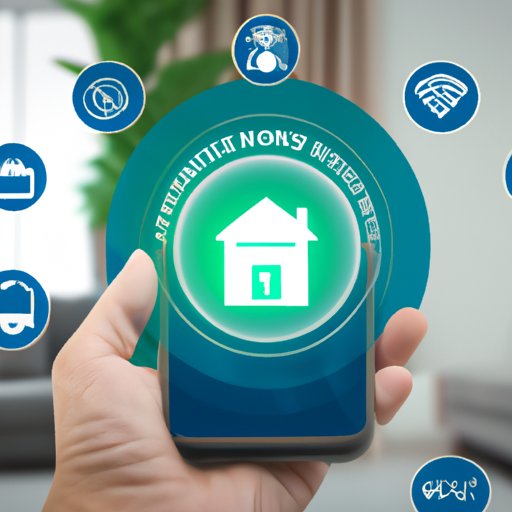Introduction
Home automation is the process of connecting the devices in your home and giving them the ability to communicate with each other. This includes things like lights, security systems, thermostats, and more. With home automation, you can control all these devices from one central hub or even your smartphone.
The benefits of home automation are plentiful. You can save energy and money by automating tasks such as turning off lights when no one is in the room, and you can also increase safety and convenience by setting up alerts when certain actions take place. Plus, home automation makes it easier to keep an eye on your home while you’re away and gives you peace of mind.
A Beginner’s Guide to DIY Home Automation
If you’re interested in home automation, there are plenty of options available. The two main types of home automation systems are hardwired and wireless. Hardwired systems require wires to be run through your walls, while wireless systems use radio frequency signals to control devices.
Each type of system has its own advantages and disadvantages. Hardwired systems are more reliable and secure, but they can be expensive and time consuming to install. Wireless systems are less expensive and easier to install, but they can be unreliable and vulnerable to interference.
Regardless of which system you choose, you should make sure that it supports the devices you want to connect. For example, if you want to control your lights, you’ll need a system that supports lighting automation.

Benefits of Home Automation and How to Get Started
The advantages of home automation are numerous. According to a study conducted by the National Institute of Standards and Technology, homes with automated features are more efficient, safer, and more comfortable than those without. Automation can also help save energy and money by controlling lights, appliances, and other devices.
Getting started with home automation is easy. First, decide what type of system you want to use. Then, purchase the necessary equipment such as sensors, controllers, and hubs. Finally, install the system and configure it to your needs.
Pros and Cons of DIY Home Automation
Doing it yourself (DIY) home automation has both pros and cons. On the plus side, it can be cheaper than hiring a professional, and it allows you to customize the system to your exact needs. Additionally, it can be a fun and rewarding project to tackle.
On the downside, DIY home automation can be time consuming and difficult. It requires knowledge of electronics and programming, as well as patience and attention to detail. If you don’t have these skills, it may be best to hire a professional to install the system for you.
Cost-Effective Solutions for Home Automation
There are many cost-effective solutions available for home automation. Smart plugs and switches are some of the most popular low-cost options. These devices allow you to control lights, appliances, and other devices from your phone or voice assistant.
Another cost-effective solution is a home security system. Many home security systems come with automated features such as motion detectors and door locks. They can be controlled remotely, giving you peace of mind when you’re away from home.
Finally, there are several open source home automation platforms available. These platforms allow you to build your own system using existing hardware and software. This is a great option for those who want to customize their system without breaking the bank.

Tips and Tricks for a Successful Home Automation Project
When attempting a DIY home automation project, there are a few things you should keep in mind. First, make sure that your home is prepared for the installation. This means checking for any wiring issues and ensuring that there is enough power to support the system.
Second, be aware of common issues such as interference and connection problems. If you encounter any problems, try troubleshooting them before calling a professional. Finally, consider the future when designing your system. Think about what you might want to add in the future and plan accordingly.
Conclusion
Home automation brings many benefits to your home, from energy savings to increased safety and convenience. There are many ways to get started, from purchasing a pre-made system to building your own with open source technology. DIY home automation can be a great way to save money and customize your system, but it requires knowledge and patience.
No matter how you choose to approach home automation, it’s important to keep costs down and prepare your home for the installation. With a bit of research and planning, you can create a smart home that meets your needs and fits your budget.
(Note: Is this article not meeting your expectations? Do you have knowledge or insights to share? Unlock new opportunities and expand your reach by joining our authors team. Click Registration to join us and share your expertise with our readers.)
